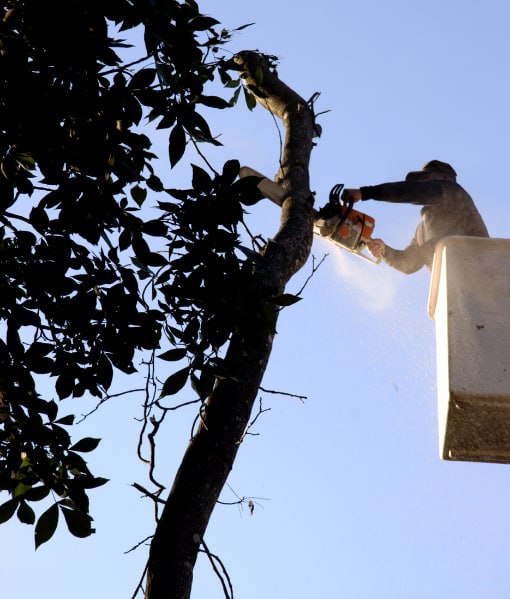
Introduction: Hedges are a versatile and essential component of garden design, offering privacy, structure, and aesthetic appeal. However, maintaining a hedge involves more than just regular trimming. Understanding how hedge cutting impacts sun exposure and managing the balance of shade and light is crucial for optimal plant health and garden functionality. At Tenterden Tree Surgeons, we are committed to helping you achieve the best results for your garden. This blog post explores how hedge cutting affects sun exposure and provides practical tips for managing shade and light.
- The Impact of Hedge Cutting on Sun Exposure
Sunlight and Plant Health
- Photosynthesis: Plants, including hedges, rely on sunlight for photosynthesis, the process that fuels their growth. Proper sun exposure ensures that your hedge remains healthy and vibrant.
- Growth Patterns: Hedges that receive adequate sunlight will grow evenly and robustly. Inadequate light can lead to leggy, sparse growth and increased susceptibility to pests and diseases.
Shade Management
- Creating Shade: Hedges can be used to create shade, which is beneficial for protecting delicate plants from harsh sun or providing cool areas in your garden. However, improper cutting can lead to excessive shading, affecting other plants.
- Balancing Light and Shade: Effective hedge cutting involves managing the balance of light and shade, ensuring that all garden areas receive appropriate exposure.
- Strategies for Managing Sun Exposure Through Hedge Cutting
Assessing Light Levels
- Sunlight Assessment: Before cutting, assess how sunlight moves through your garden and the impact of your hedge on different areas. Consider using a sun chart or observe light patterns throughout the day.
- Identifying Problem Areas: Identify areas that may be receiving too little or too much light due to the hedge. This will guide your cutting strategy to address any imbalances.
Cutting Techniques for Optimal Sun Exposure
- Selective Pruning: Remove branches that are blocking light from reaching important areas. Focus on thinning out dense sections of the hedge to allow more light to penetrate.
- Shaping and Contouring: Shape your hedge to prevent it from casting excessive shade on other parts of your garden. A well-contoured hedge can direct light where it is most needed.
Timing of Cuts
- Seasonal Considerations: Timing your hedge cutting can influence how sunlight reaches different parts of your garden. For instance, cutting during late winter or early spring before the growing season starts can help optimise light exposure.
- Avoiding Midday Cuts: To minimise disruption to your garden’s light balance, avoid heavy cutting during the peak growing season, as this can stress the hedge and affect its light management.
- Managing Shade and Light for Specific Plant Types
Shade-Tolerant Plants
- Choosing the Right Plants: Select shade-tolerant plants for areas that receive less light due to the hedge. These plants can thrive in lower light conditions and complement the shaded areas of your garden.
- Maintenance Tips: Regularly check these plants for signs of stress and adjust your hedge cutting to ensure they are not overly shaded.
Light-Loving Plants
- Positioning and Care: Plants that thrive in full sun should be placed in areas where they can receive adequate light. Adjust your hedge cutting to ensure these plants are not overshadowed.
- Maximising Light: Regularly trim hedges to maintain an open structure that allows maximum sunlight to reach these plants.
- Seasonal Considerations for Hedge Cutting and Sunlight
Winter and Early Spring
- Optimising Growth: Cutting your hedge during winter or early spring can help improve light penetration as the growing season begins. This can encourage healthier, more balanced growth.
Summer and Autumn
- Managing Overgrowth: During the growing season, hedges can quickly become overgrown. Regular light trimming can help maintain the balance of light and shade in your garden.
- Professional Advice and Services
Expert Consultation
- Tailored Solutions: At Tenterden Tree Surgeons, we offer expert advice on managing sun exposure and hedge cutting. Our professional team can assess your garden’s unique needs and provide tailored recommendations.
Efficient Cutting Services
- Quality Care: If you require assistance with hedge cutting and managing sun exposure, our experienced team can ensure that your hedges are trimmed to maximise light and enhance the health of your garden.
Conclusion: Hedge cutting plays a significant role in managing sun exposure and balancing light and shade in your garden. By understanding the impact of your hedge on sunlight and employing effective cutting techniques, you can ensure that your garden remains healthy and well-balanced.
Call us on: 01580 234692
Click here to find out more about Tenterden Tree Surgeons
Click here to complete our contact form and see how we can help you with your tree’s needs.